Champagne Auction with Tyson Stelzer
Tyson Stelzer talks Australia’s love of Champagne and where the true romance starts.
LANGTONS Champagne Auction brings the finest and rare grower and grand marque Champagnes to Australia. This flagship auction has been in the making for a long time as our clients, who define fine wine collecting in Australia, look to add more fine, long-lived champagnes to their collections.
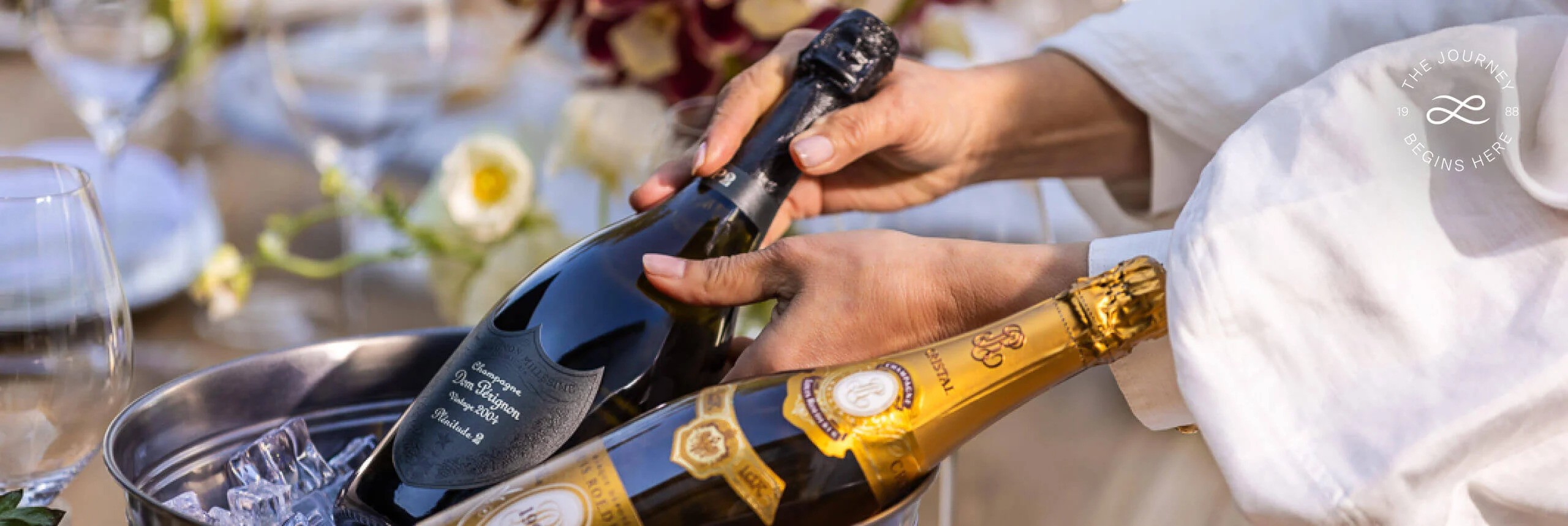
LANGTONS Champagne Auction reflects the evolving Australian market for fine Champagne. Australia has been a strong market for non-vintage Champagne for years, but things are changing with more fine wine collectors adding ultra-premium Champagnes to their cellars.
LANGTONS has partnered with Tyson Stelzer to bring this auction to Australia. Tyson is Australia's leading voice on Champagne. His comprehensive Champagne Guide, now in its 7th edition, is the deflective guide for Champagne collectors with over 1200 tasting notes from 142 Maisons. We caught up with Tyson to delve deeper into the Champagne market to better understand why this auction came at the right time.
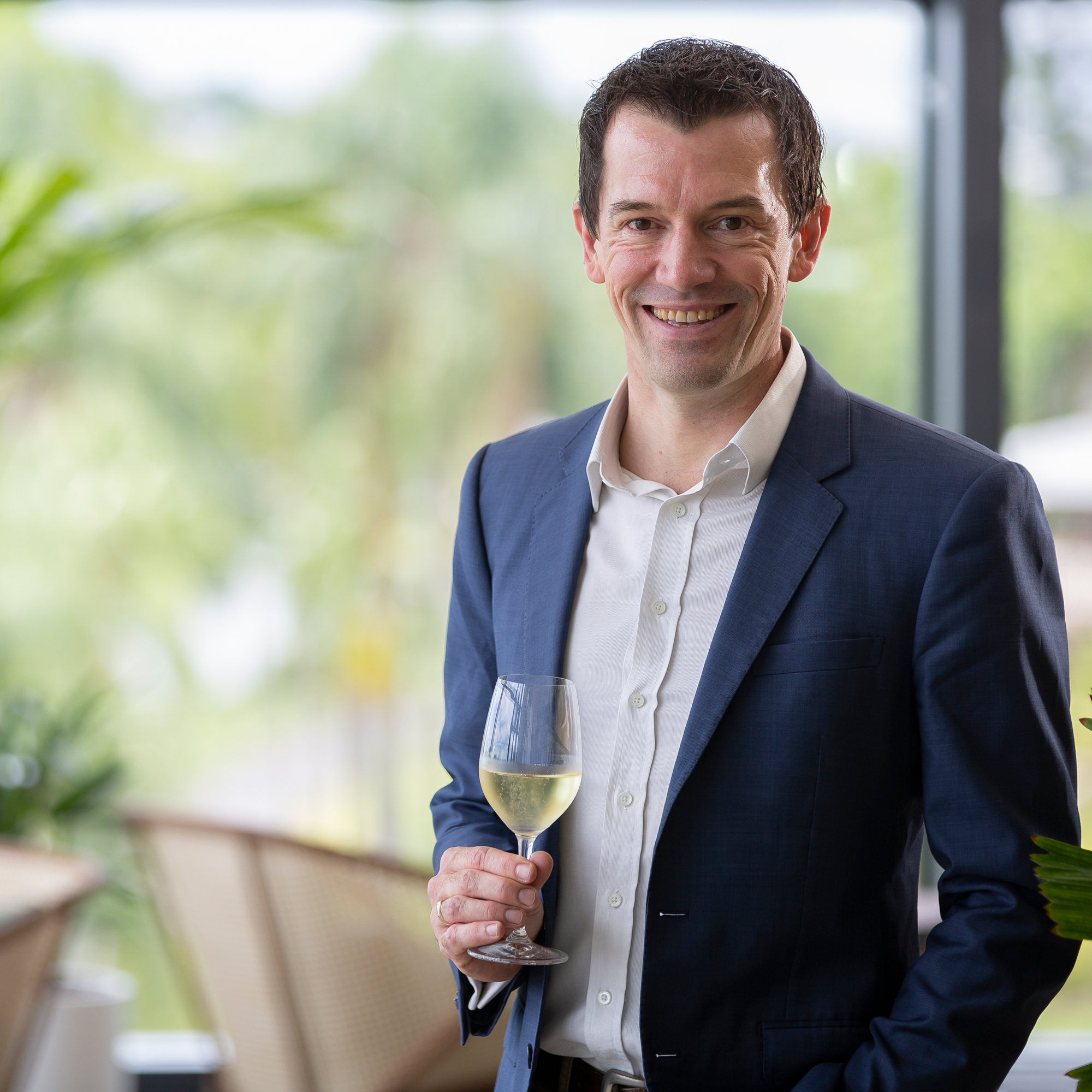
Tyson Stelzer
Australia has long been a strong market for Champagne. How has the wider market for Champagne in Australia evolved in recent years?
Champagne in Australia is in a massive state of flux right now, setting new records every year! Exciting diversity is beginning to emerge in this market long characterised by volume and value. In 2022 Australia imported a record 10.5 million bottles of champagne at a record ex-cellar value of €188.3 million, making us the only country in the world to post growth in this tricky economic environment. This represents 12-fold growth in volume and even greater growth in value in the past 21 years, reaffirming our position as the fourth largest champagne market per head of population!
A market long dominated by the entry-level, non-vintage cuvées of large houses, there is a slow yet exciting trend toward increasing diversity of champagne consumption in Australia, indicative of the maturing of the market. Such growth is unprecedented globally, and particularly noteworthy at a time when champagne availability remains limited and pricing is at a record high.
In 2022, Australia imported 33 more brands than 2021, representing a record 135 houses, 187 growers and 15 coopératives, reflective of the increasing diversity of champagne in our market. Non-vintage imports dropped to 88.8%, the lowest since 2008, thanks to small rises in rosé, prestige and vintage and especially in low dosage, which set a new record of 2.7% of imports, almost doubling 2021 shipments.
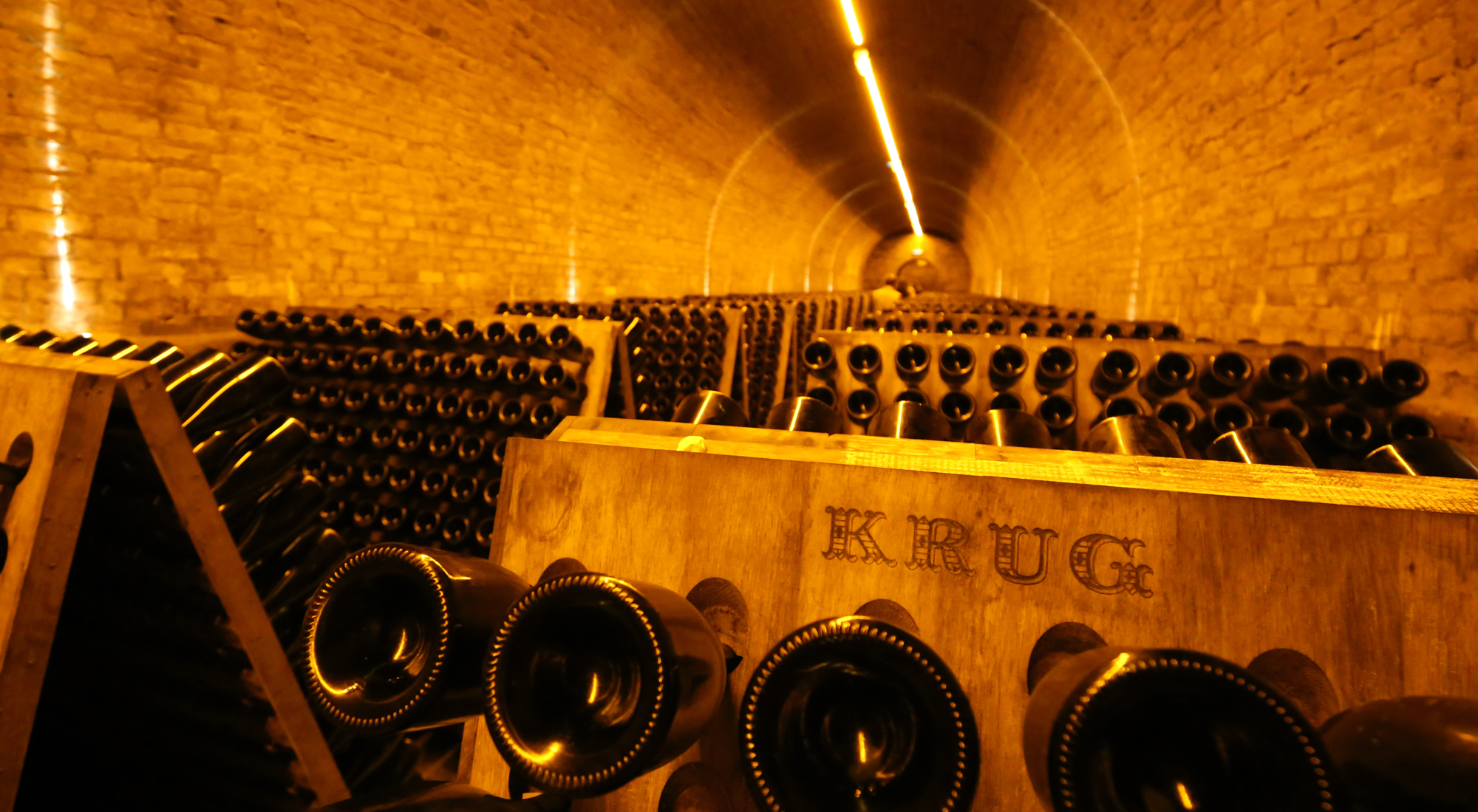
The hallowed cellars at Champagne Krug
In recent years, the world of Champagne was presented as a battle of Growers vs. Grand Marques. These days, it is more Growers AND Grand Marques. Can you share your insights on the development of Grower Champagne in Australia? Who buys it? And why?
Growers represent just two percent of Australia’s champagne imports. Over the past decade, global champagne grower sales have dropped by one-third. Part of the reason is that an increasing band of Champagne’s most celebrated growers have relinquished their récoltant-manipulant (grower producer) credentials to be reincarnated as a négociant-manipulant (house) in order to purchase fruit and grow production. Some of the most famous examples include Bérêche et Fils, La Closerie, André Clouet, De Sousa, Diebolt-Vallois and J.L. Vergnon.
In an age when champagne markets religiously celebrate récoltant-manipulant status, relinquishments such as these are testimony to the reality that in Champagne itself, there is no such segregation between récoltants and négociants, and its very suggestion is vigorously dismissed by both sides.
Irrespective of their official designation, Champagne’s small producers hold an important significance for Australian champagne lovers, offering a take on micro-production, individual villages and a diversity of style that completes the increasingly complex and spectacular panorama that is champagne today.
'Premiumisation' is a buzzword in wine as the industry changes tack from bulk to bespoke. Champagne is deeply immersed in luxury. As many still wine producers seek to enter this space, how will this affect Champagne? Do you see changes ahead for Champagne, and what are the implications from Australia?
Champagne remains the bargain of the luxury wine world, with prestige champagne ranking as the most affordable and most accessible of all flagship global benchmark wine styles. When was the last time you found a mature First Growth Bordeaux or Grand Cru Burgundy for the same price as Krug Grand Cuvée? In 1904, Moët & Chandon Carte Bleue sold for the same price as Château Latour, Château Margaux and Château Haut-Brion. A 30-year-old Château Lafite was just double the price of a bottle of Louis Roederer, Mumm Cordon Rouge or Veuve Clicquot. Today, these Bordeaux wines are 20 times the price! Champagne does not rank even once among the top 20 most expensive wines in the world.
And yet champagne is the most costly of all wines to produce, and this cost is spiralling. Champagne’s steady march toward sustainability has diminished yields by roughly 25% in recent years, while increasing vineyard labour by a similar proportion. The price of grapes continues to spiral by around eight percent every year, from €6.20 in 2018 to close to €10 per kilogram in 2023. Ancillary and energy costs have also skyrocketed since the pandemic and the Ukraine war. Costs were further magnified by dismal yields in 2020 and 2021.
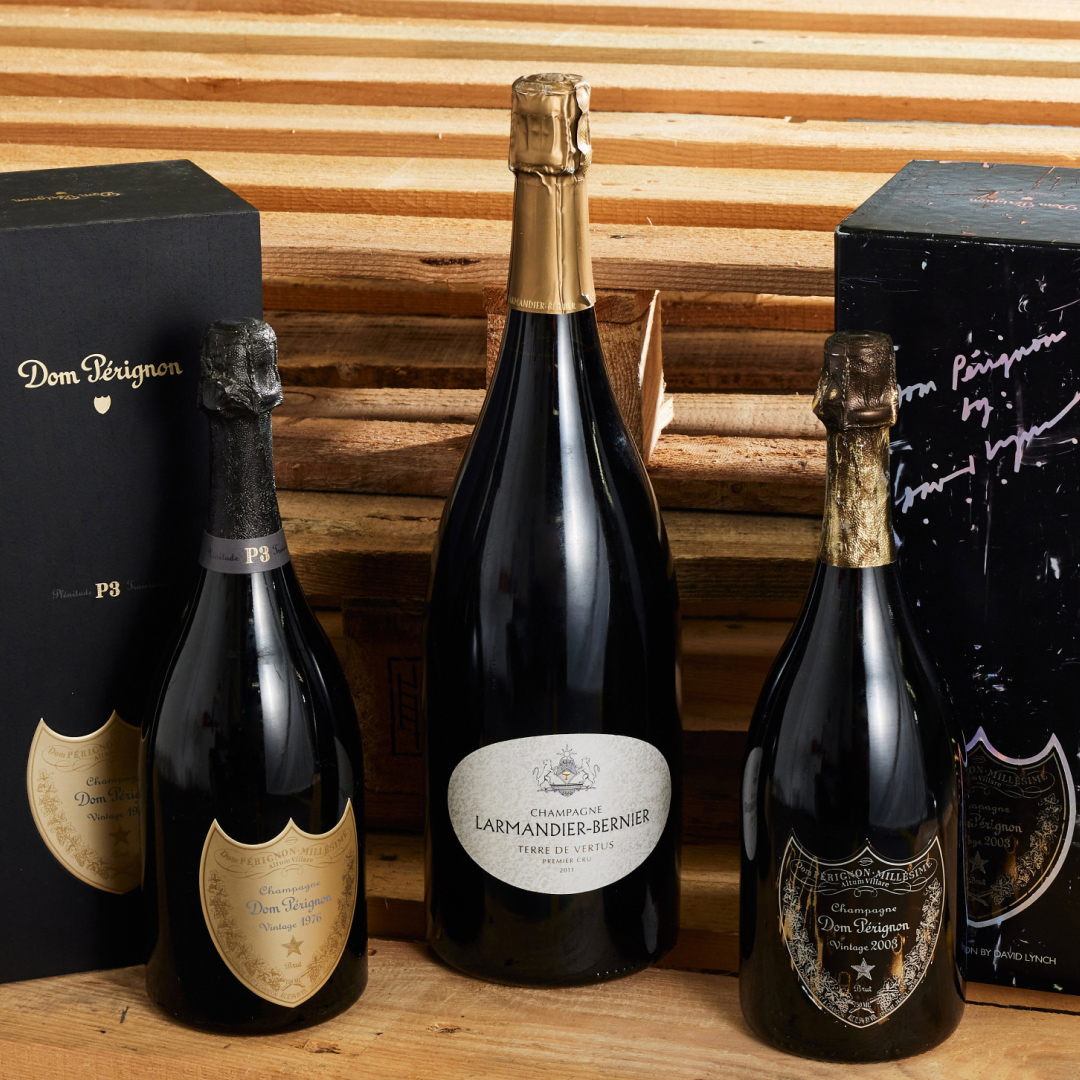
Dom Perignon 1976, Champagne Larmandier-Bernier, Dom Perignon 2003 Creator
It takes between 1.2 and 1.5 kilograms of grapes to make a bottle of champagne.
Historically, a kilogram of grapes was 35 percent of the average price of a bottle of champagne. Do the maths on today’s grape prices and you’ll see why low-cost, entry-level champagne is now all but extinct.
Champagne has the blessing of a delayed pricing structure since champagnes sold today are made from grapes and bottles purchased two, five or ten years ago. Knowing the inflation in costs over this time we can anticipate that the recent pattern of annual price increases of three to five and at most seven to ten percent will continue for the foreseeable future.
At a time of record prices, volatility in the global climate, record diversity of champagne in Australia and unprecedented scarcity of the most sought-after cuvées, it has never been more vital to keep your finger on the champagne pulse, to carefully scrutinise every release and to move more decisively and more swiftly to secure allocations.
As the champagne glass ceiling continues to rise and rise, opportunity increases for the top sparkling winemakers of the world to compete. In this space, the great sparkling producers of Tasmania have never been stronger.
In The Champagne Guide Edition VII, you review more than 1300 wines. Are there any producers that stood out to you since the previous edition as emerging or ones to watch? And where is the value of Champagne today?
In each edition of The Champagne Guide, my Hall of Honour is the most rigorous and up-to-the-minute shortlist of the finest houses of recent years. Bollinger and Krug are deserving of special mention for maintaining the highest rating of 10/10 in all seven revisions. In the latest edition, nine houses have ascended one rank: Bonnaire, Diebolt-Vallois, Lallier, Mailly Grand Cru, Marc Hébrart, Palmer & Co, Philippe Glavier, Pierre Péters and Vilmart & Cie.
Champagne value today is changing. When I first created The Champagne Guide as a global reference in late 2010 I introduced a price code from $ (under $60) to $$$$$ (over $300) to communicate relative value. The champagne world has moved a long way in the past 14 years and I recently introduced $$$$$$ (over $600)!
The spiralling price of champagne is alarming. More than eight percent of the cuvées I reviewed in The Champagne Guide 2011 were $ and just over ten percent were $$$$$. Of 1260 cuvées in The Champagne Guide Edition VII, there are but two at $ and 385 at $$$$$ (that’s almost 25%!). It is painfully apparent that cheap entry-level champagne in my $ tier is now all but extinct.
Champagne nonetheless upholds its status as the last remaining bargain of the ultra-premium wine world, and entry non-vintage will never see escalating prices of Burgundy or Bordeaux proportions. The market remains competitive, and most houses will uphold the recent pattern of annual price increases of three to five and at most seven to ten percent.
While there will still be bargains to snap up from time to time, this new champagne world in which we find ourselves calls for a more strategic approach: build a relationship with a top retailer, advise them of what you want before it lands and secure your allocations in advance. Many houses send multiple shipments to each market, offering a second chance if you miss the first tranche.
Recent champagne inflation coincides with a boom in the secondary market. The French and UK auction houses are reporting that champagne is their third most popular offering (after Bordeaux and Burgundy of course) and are currently seeing significant interest in champagne from buyers in Hong Kong, the USA, South Korea and Singapore.
The London International Vintner’s Exchange (Liv-ex) reports the growth in the champagne index over the past four years as higher than any other category besides perhaps Burgundy (though Burgundy has dropped a little more than champagne in the past 12 months).
Sotheby’s 20-year index shows champagne (320) as second only to Burgundy (400), both well outperforming Bordeaux (240). It reports an increasing demand for champagne, last year listing Krug as the first champagne house to ever appear in its top 10 producers.
There is a mutual cause and effect relationship as the primary and secondary markets drive the price of the most sought-after champagnes ever upward.
This is why I have partnered with Langton’s this year to create Champagne: Auctioning the Worlds’ Finest.
What highlights have you spotted in this Champagne auction?
I’ve been delighted by the special and rare bottles that have been put forward for our inaugural champagne auction, both from champagne lovers and direct from the cellars of the houses. Writing at a time when submissions are still pouring in, there will be many more highlights deserving of mention, but for now highlights include Rare Champagne 2002 en jeroboam, Salon 1971 en magnum and too many highlights to list from the 1970s, 1980s and 1990s including Krug Clos du Mesnil, Bollinger R.D., Pol Roger Sir Winston, Dom Pérignon, Duval-Leroy Femme, Lanson and Piper-Heidsieck.
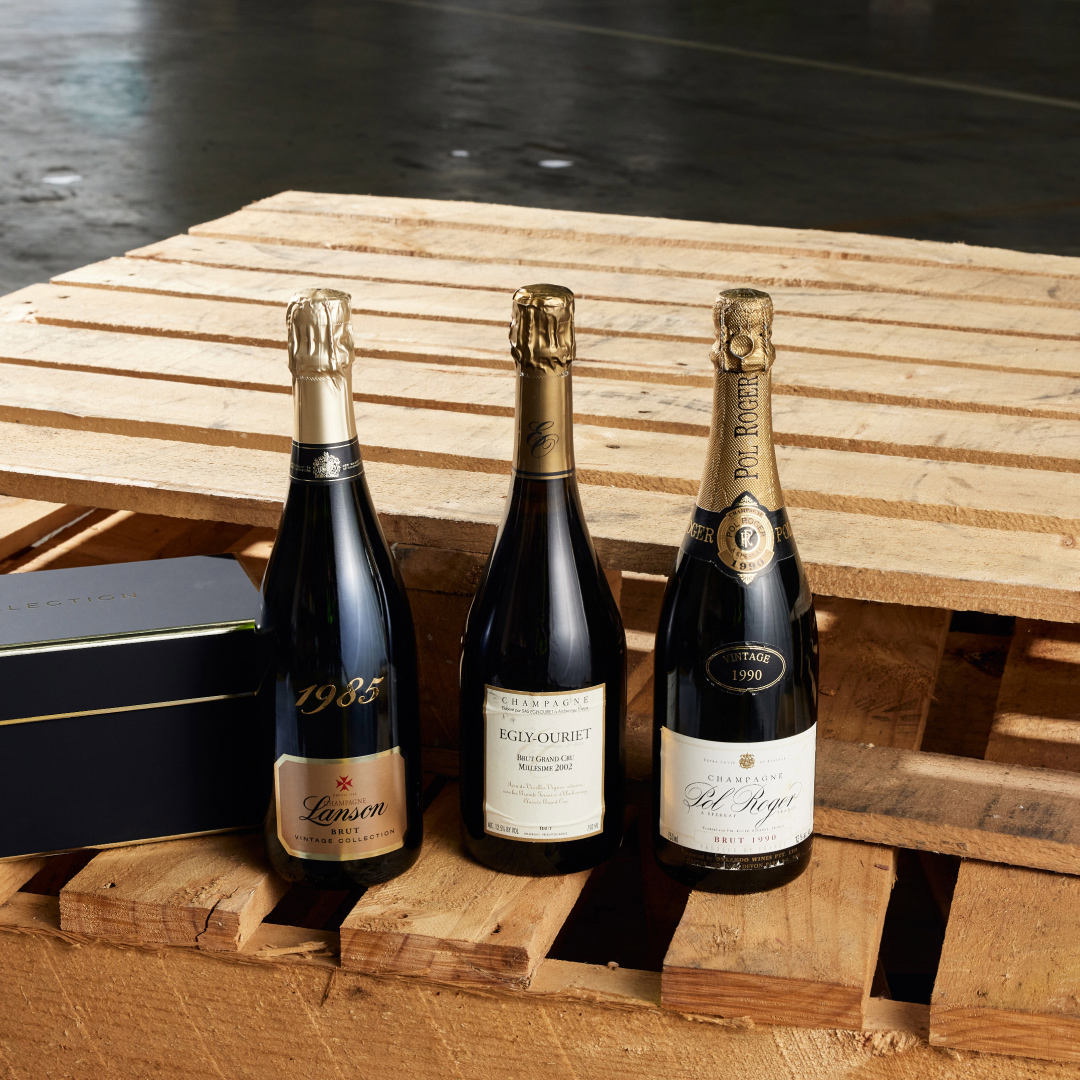
Champagne Lanson 1985, Egly-Ouriet 2002, Pol Roger 1990
What should collectors know about cellaring Champagne for the short and long term? What should collectors look (and look out) for in a superannuated Champagne?
Twenty-year-old champagne is one of my favourite indulgences, and a top vintage wine or prestige cuvée will comfortably go the distance. Generally, aim to drink vintage champagnes between eight and 15 years after vintage. Late-disgorged vintages are held on lees in the cellar and can improve over many decades.
One of the most profound champagnes I’ve ever tasted was Bollinger 1914 disgorged in 1969. After more than half a century on lees and almost as long on cork, it was so youthful I guessed it was late 1970s!
Champagne spends the first years of its life in a dark, humid, chalk cellar under Champagne at a constant temperature of 8–10ºC, so it will get a rude shock if it’s thrust into a warmer environment. Champagne is highly fussy when it comes to proper cellaring conditions and, unless you live somewhere particularly cold, if you don’t have a climate-controlled cellar, err on the side of caution and drink it within a few years.
Champagne in clear glass bottles is remarkably light sensitive, so keep it in the dark at all times. If it comes in a box, bag or cellophane wrap, keep it covered until you serve it.
Nothing quite makes a statement like large format fizz. Popping a magnum of Champagne for your guests is a statement of intent from a generous host. Other than volume, does the format of the bottle matter?
Everyone loves big bottles, but there’s something much more compelling about large formats than just their flamboyant party appeal, and this is more pronounced in champagne than any other wine! The Champenois uphold the magnum as the perfect size. The cork is the same size as a standard bottle, halving the potential for oxidation. Since secondary fermentation occurs in a larger space, it progresses at a slower pace, increasing freshness, complexity and texture. And to handle six atmospheres of pressure, a magnum bottle is significantly more than double the thickness of a standard bottle, increasing resistance to thermal fluctuations, shock and light.
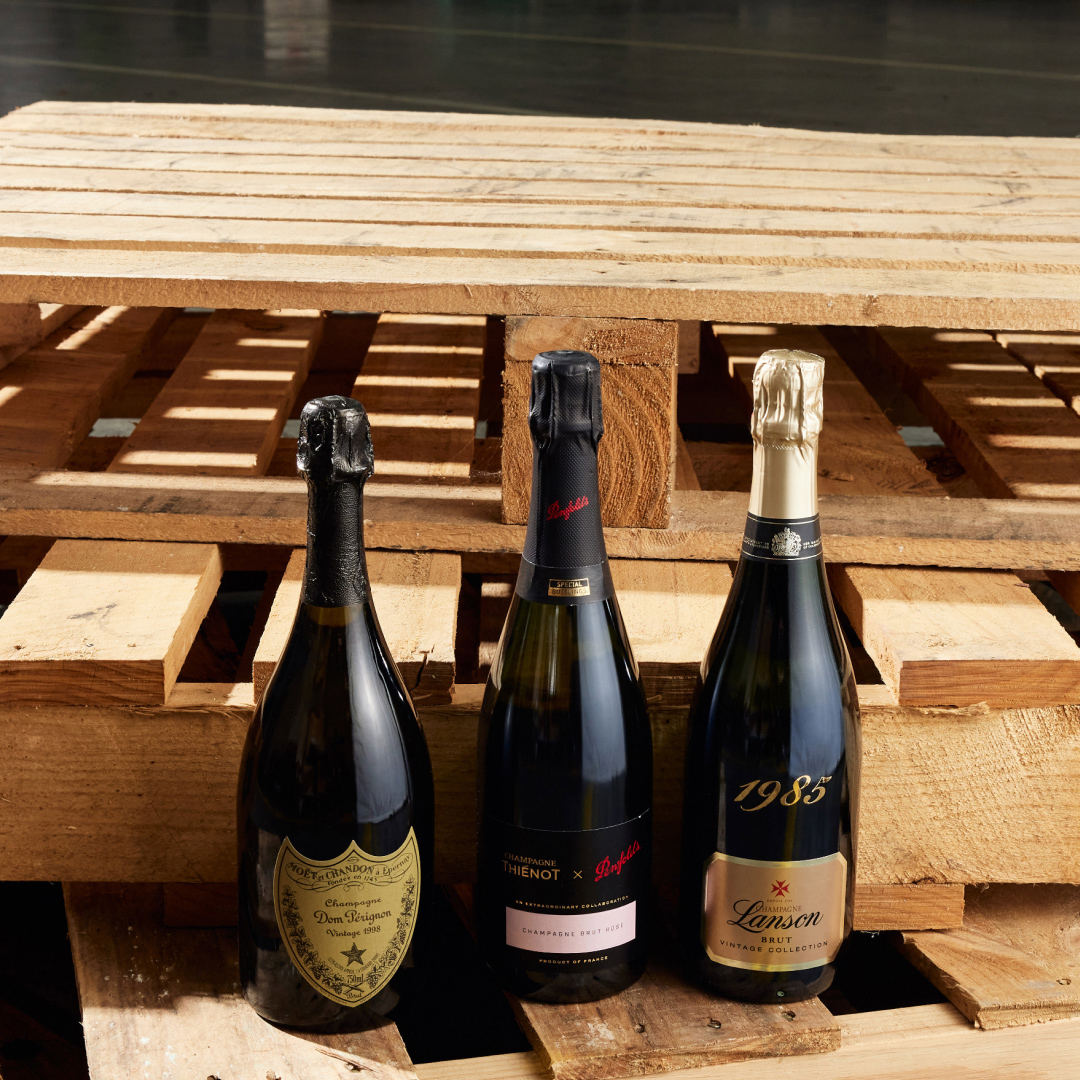
Dom Perignon 1998, Thienot X Penfolds Rose, Champagne Lanson 1985
Champagne isn't just for celebrating; it is, in fact, quite versatile. The classic iconoclastic pairing is Champagne and hot chips. Can you share an unusual pairing that can put Champagne in a different context?
Champagne and sushi! My local sushi train used to allow BYO and it was fabulous! Sadly they changed ownership and I’ve never found another BYO sushi train!
You are no stranger to the region of Champagne. Which Maisons are the must-visit for Champagnephiles who made the pilgrimage?
Unfortunately champagne’s finest houses are not open to the public, which is the reason I created my Champagne tour, opening the doors to my favourite houses, including Billecart-Salmon, Bollinger, Charles Heidsieck, Deutz, Dom Pérignon, Krug, Louis Roederer, Rare Champagne, Pol Roger, Salon, Taittinger and Veuve Clicquot.
Finally, a day in Champagne! You pull into the station at Gare de Reims, put down your pen and take off your critic's hat. As a lover of Champagne, what would a perfect day in the city and the region be for you?
I love visiting champagne’s top houses, growers, cellars, restaurants and accommodation, but what captivates me most is walking the rows of its vines. It is here that the true romance of champagne is born. To really understand this region, I love to get under the surface, outface the elements and experience the tension of its climate, the diversity of its terroirs and the toil of its makers. To walk the ground in which they grow, to breathe the cool air that brought them to life, to linger for hours on ancient slopes.